Australian Tropical Rainforest Plants - Online edition
Barringtonia calyptrata (Miers) R.Br. ex F.M.Bailey
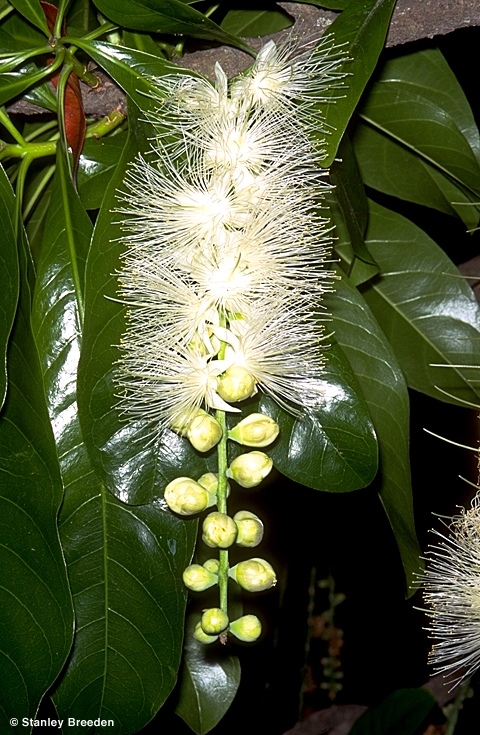

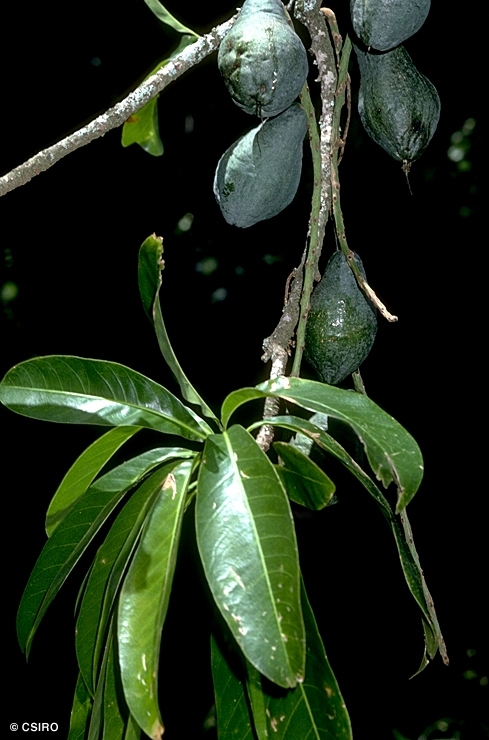

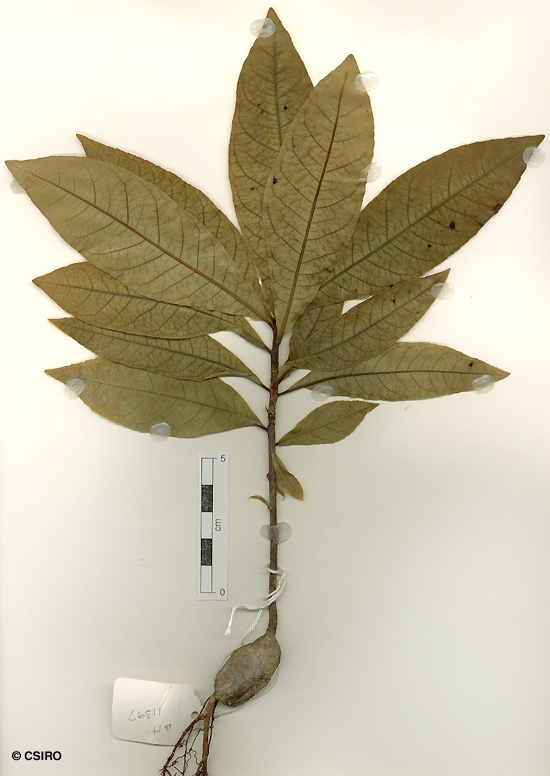
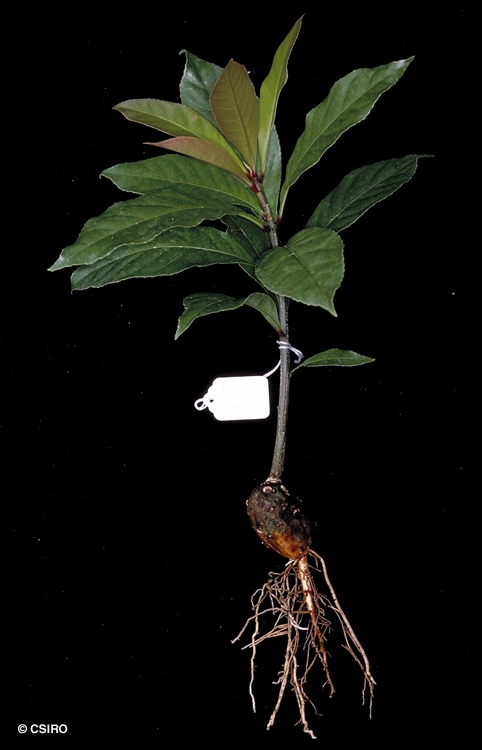

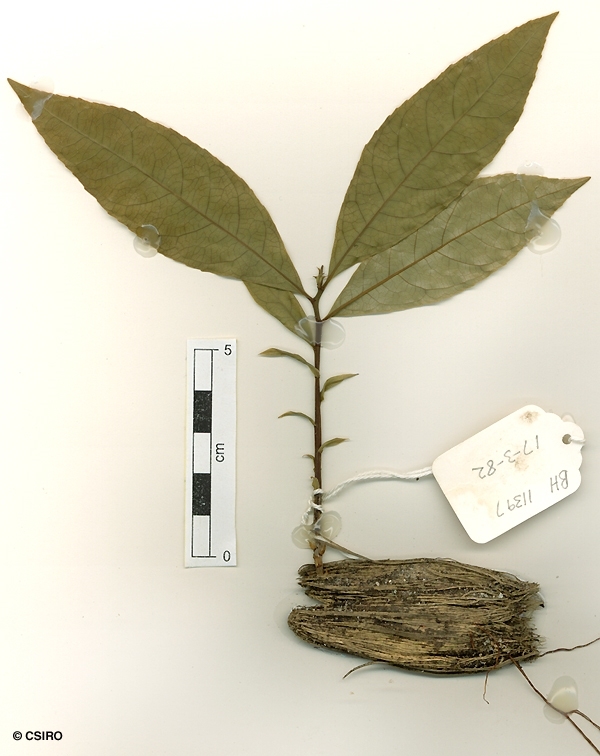

Bailey, F.M. (1907) Queensland Agricultural Journal 18: 125.
Pine, Cassowary; Pine, China; Mango Pine; Barringtonia, Blue-fruited; Blue-fruited Barringtonia; Corned-beef Wood; Cornbeef Wood; China Pine; Cassowary Pine; Barringtonia; Pine, Mango; Mango
Leaf blade often rather large, about 15-39 x 5-13 cm. Twig bark rather strong and fibrous when stripped. Midrib of the leaf also rather strong and fibrous. Lateral veins curving and forming inconspicuous loops inside the blade margin. Old leaves turn red prior to falling.
Fruits more or less fleshy when ripe, ovoid or spindle-shaped, about 5-9.5 x 4-6.5 cm.
Roots grow from the opposite end of the seed to the leafy shoot. Cataphylls gradually increasing in size up the stem grading into leaves and sometimes occur among the true leaves. At the tenth leaf stage: leaves elliptic, apex acuminate; lateral veins forming loops inside the blade margin; teeth more pronounced along the upper half of the leaf blade. Seed germination time 43 to 430 days.
Fruits eaten by Cassowaries. Cooper & Cooper (1994).
A species which is already in cultivation deserves to be used more often, especially in parklands. Will withstand wet or seasonally dry conditions and produces creamy yellow flowers in long pendulous racemes.
This species has been used as a fish poison. (http://squid2.laughingsquid.net/hosts/herbweb.com /herbage/A3366.htm)
Produces a useful general purpose timber. Wood specific gravity 0.73. Cause et al. (1989).





